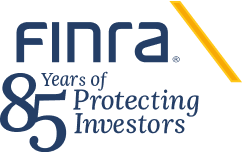September 2005
In a continuing effort to assist member firms' compliance efforts, NASD is issuing this regular communication, "Improving Examination Results." This document has two sections: "Examination Priorities" and "Frequently Found Violations," both of which relate to the Department of Member Regulation's routine examinations of firms. While each
The rules around Failure to delivers (on short selling) for larger organizations (namely citadel securities and others), is giving them a way out to continue to drag down companies and squeeze out retail investors. The market does not function the way it should with the hand tipped to the market maker. The market maker is also the one funding the media outlets, may own assets in 'educational
Industry Governor (Large Firm Representative)Chief Operating Officer, Raymond James Financial Governor Since 2023Committees: Conflicts Committee (Chair), Executive Committee (Chair), Finance, Operations & Technology Committee, Regulatory Policy Committee (ex officio)Professional ExperienceRaymond James Financial Chief Operating Officer (2024 – present)President –
FINRA Reminds Firms of Their Trade Reporting Obligations Relating to Customer Sales of Low-Value OTC Equity Securities
The Customer Order Handling: Best Execution and Order Routing Disclosures topic of the 2025 FINRA Annual Regulatory Oversight Report (the Report) informs member firms’ compliance programs by providing annual insights from FINRA’s ongoing regulatory operations, including (1) regulatory obligations, (2) findings and effective practices, and (3) additional resources.
Executive Summary
On July 2, 1998, the Securities and Exchange Commission (SEC or Commission) amended SEC Rule 17a-5 to require broker/dealers to complete reports regarding their readiness and activities to prepare their businesses to address Year 2000 challenges and risks. The Rule amendment was published in the Federal Register—63 FR 37667 on July 13, 1998. Complete Rule information is also
What is the purpose of this change? It seems that this change is to benefit institutional investors by restricting retail investors access to complex products. Leveraged and inverse ETFs are incredibly important to my trading strategy and would be detrimental to my portfolio to remove or limit my access to these products. These are important protections and funds available to continue growing my
I should be able to invest in the public investments that are available. There should be not any special process like passing a test before I can invest in public securities.
I use leveraged and inverse funds to hedge my portfolio in volatile market. It is very important to me to have the leveraged and inverse funds available to investors like me. I do not want to sell all the stocks in my
I feel strongly that FINRA's proposed rule (#22-08) is incorrectly applies 'investor protection' as FINRA's stated purpose is, specifically with regard to leveraged and inverse products. As a user of such products, were these rules implemented, I would be forced to potentially re-create the same sort of exposure on my own which is a far greater risk to my own
Comments: As a retail trader, I find that L&I funds provide adequate exposure to investment instruments of which I am seeking to trade. Traders exposed to these instruments understand and accept the risks L&I funds provide: understanding whether the fund is optioned short or long and as to how much exposure (1x, 2x, 3x). Utilizing these trading instruments are no different than
